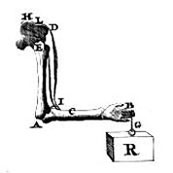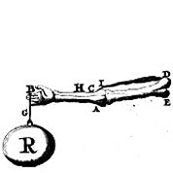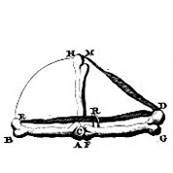Study of compatibility issues for proper man-machine interface is very important in ergonomics. Here, focus is generally made on user’s requirement, user’s characteristics and user’s capabilities/limitations for user friendly design. Human compatibility with machine/instrument/work elements are discussed in terms of anthropometric, biomechanical,physiological and cognitive/psychological aspects.
Anthropometry:
Anthropometry is the subject which deals with the measurements of the human external body dimensions in static and dynamic conditions. Anthropometric data is used for product and workplace design.
Anthropometry is of two types:
• Static Anthropometry
• Dynamic Anthropometry
Static Anthropometry:
External human body dimensional measurement taken when a man is placed in a rigid static position i.e. standing, sitting, or other adopted postures.
Dynamic Anthropometry:
The dimensional measurement of human body with various movements taken into consideration in different adopted postures which the work context demands are termed dynamic anthropometry.
To understand anthropometry, knowledge of body planes and somato-types are essential. These imaginary planes (fig. 1) are used for the identification of relationship between the position of things and postural configuration and for description of any location

Fig 1. Body Planes
(Image Source: http://images.wikia.com/athletics/images/1/13/Body_planes.jpg)
Somatotypes:
The human body types are classified according to the contents of fat in the body. These are ectomorphs, mesomorphs and endomorphs.
• Ectomorphs:
• Mesomorphs:
• Endomorphs:
• Ectomorphs:
Due to low fat storage, the full body appears to be skinny, lean and thin (fig 2). Abnormal postures are adopted by the people of this category while working, standing, and sitting.

Fig. 2. Ectomorphs (Adopted from Chakrabarti, 1997)
• Mesomorphs:
This type of body contains less fat but is well balanced and firm; usually referred to as muscular (fig. 3). Movements are well coordinated in all the limbs and in the body as a whole.

Fig. 3. Mesomorphs (Adopted from Chakrabarti, 1997)
• Endomorphs:
This body type has increased fat storage, a wide waist and a large bone structure, usually referred to as fat (fig. 4).

Fig. 4. Endomorphs (Adopted from Chakrabarti, 1997)
Measuring Procedures:
Direct and indirect measuring techniques are followed to collect anthropometry data. In direct measurement method, body dimensions are measured with standard anthropometric tools/kits. In indirect measurements method relies on stealing photographs and pictures. Presently, 3D Laser Body Scanner is used for getting detailed data.
For the larger survey and sample size, statistical treatment of anthropometric data is done to get the standard measurements for whole population. An extremely useful statistic for designers is the percentile.
Percentiles are the statistical values of a distribution of variables transferred into a hundred scale. The population is divided into 100 percentage categories, ranked from least to highest, with respect to some specific types of body measurement. The first percentile of any height indicates that 99 percent of the population would have heights of greater dimensions than that. Similarly, 95th percentile height would indicate that only 5 percent of the study population would have greater height and 95 percent of the study population would have the same or less height. The 50th percentile, or median, is one kind of average which divides the whole population into two similar halves.
Biomechanics:
Biomechanics is the study of the structure and function of biological systems by means of the methods of mechanics.
It is the application of mechanical principles to biological systems of human-beings (fig. 5).



Fig. 5. Mechanical analysis of human body
(Image Source: http://upload.wikimedia.org/wikipedia)
Factors to be considered in Biomechanics:
• Newton's three laws of motion can be used to solve most biomechanical problems.
• Force:
Forces are key to understand mechanics. A force is any influence that causes a free body to undergo a change in speed, a change in direction, or a change in shape. The unit of force is kgms-2. Force can be internal or external when we consider biomechanical problems. We generally consider the body is acting within the environment.
Internal forces are the forces that act within the body, such as muscle forces, joint reaction forces, and load that act on the various body tissues.
To move relative to the outside world the body needs to be subjected to external forces. These are often the result of internal forces causing a change in the body conformation but can also be due to some other external forces such as gravity or other applied forces from contact with the object.
• Joint:
A joint is the location at which two or more bones make contact. They are constructed to allow movement and provide mechanical support, and are classified structurally and functionally. Structural classification is determined by how the bones connect to each other, while functional classification is determined by the degree of movement between the articulating bones.
Joints can also be classified according to their anatomy or their mechanical properties.
- Simple Joint: 2 articulation surfaces, e.g. shoulder joint, hip joint etc. (fig. 6)
- Compound Joint: 3 or more articulation surfaces, e.g. radio carpal joint (fig.7)
- Complex Joint: 2 or more articulation surfaces and an articular disc or meniscus, e.g. knee joint (fig.8)
• Range of Motion: Generally speaking, range of motion refers to the distance and direction a joint can move to its full potential. Each specific joint has a normal range of motion that is expressed in degrees after being measured with a goniometer (i.e., an instrument that measures angles from axis of the joint). Rage of movement for different body joints is shown in fig. 9.
Physiology:
Human physiology is the science of the mechanical, physical and biochemical functions of humans in good health, and how to apply that information in the evaluation and design of work. Various physiological aspects which are studied to evaluate work performance of human beings are as follows:
• Cardiovascular response (HR, BP, Cardiac output).
• Respiratory response (O2 uptake, CO2 out put).
• Metabolic response (Energy expenditure).
• Static & dynamic muscle loading.
• Tissue compression etc.
Increase in physiological demand for performing activity leads to physiological stress which in turn creates various health complications or disorders.

Fig. 9. Movements of the human body (Van Cott & Kinkade, 1972)
Psychology:
Psychology in ergonomics is concerned with adapting the equipment and environment to people, based upon their psychological capacities and limitations with the objective of improving overall system performance.
The objectives of psychology in ergonomics are to optimize the effectiveness and efficiency with which human activities are conducted as well as to improve the general quality of life
through "increased safety, reduced fatigue and stress, increased comfort and satisfaction.
For performing any activity, human receives various information through different sensory organs (e.g. eye, ear, nose, tongue, skin etc.), processes that information in the brain and then execute neuromuscular actions. Processing more information in a shorter duration leads to an increase in cognitive workload. Hence, in man-machine compatibility evaluation, analysis of cognitive workload is very essential.




